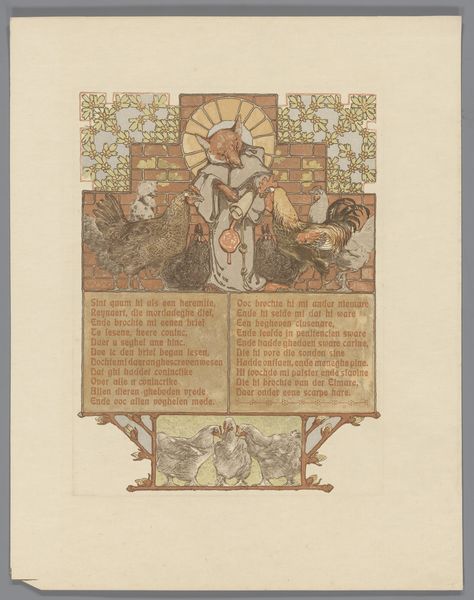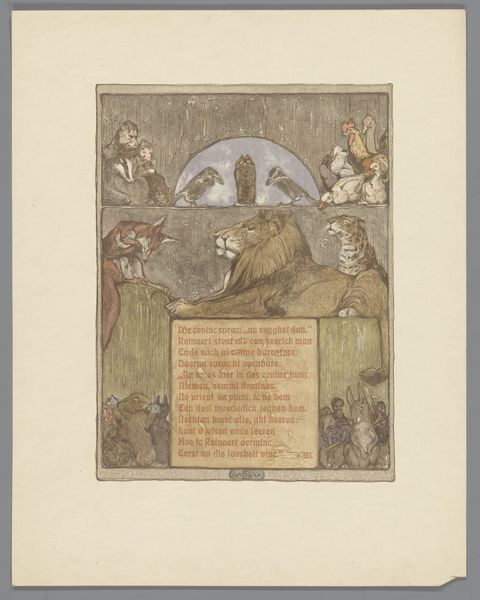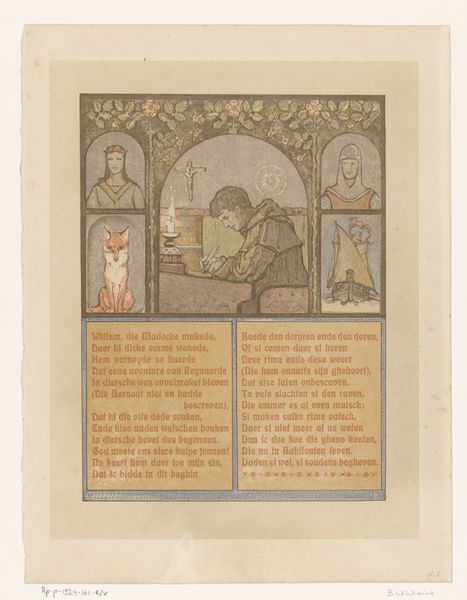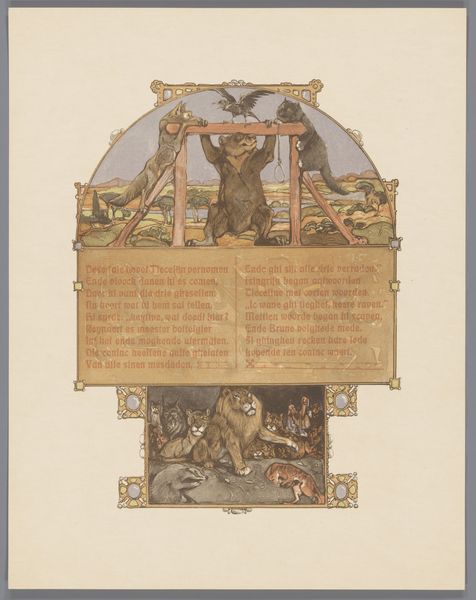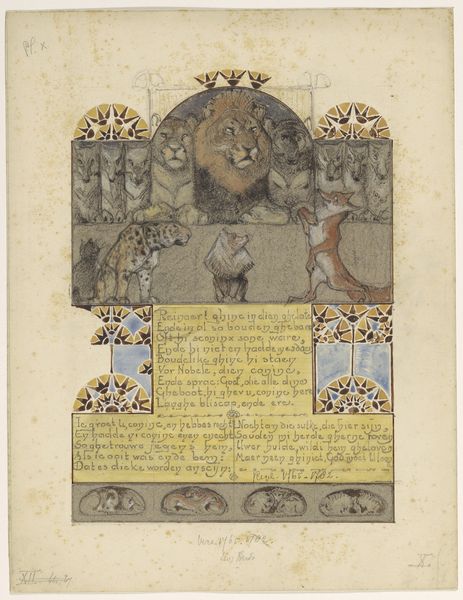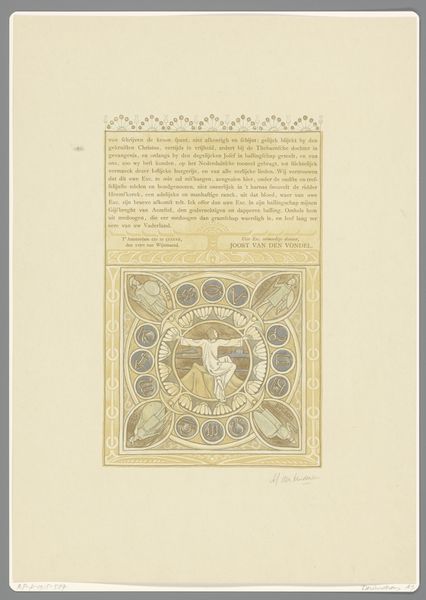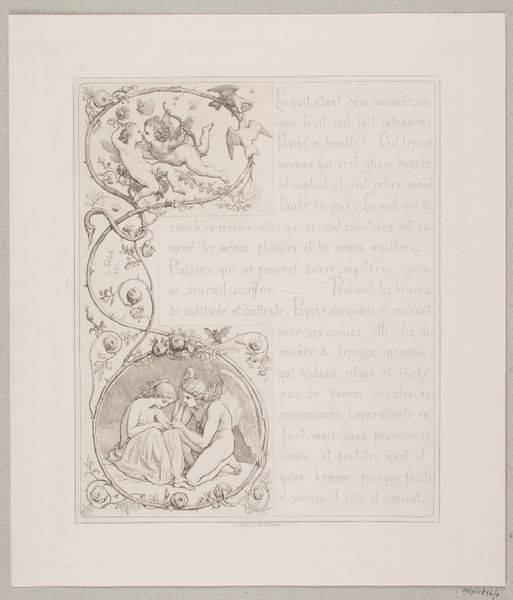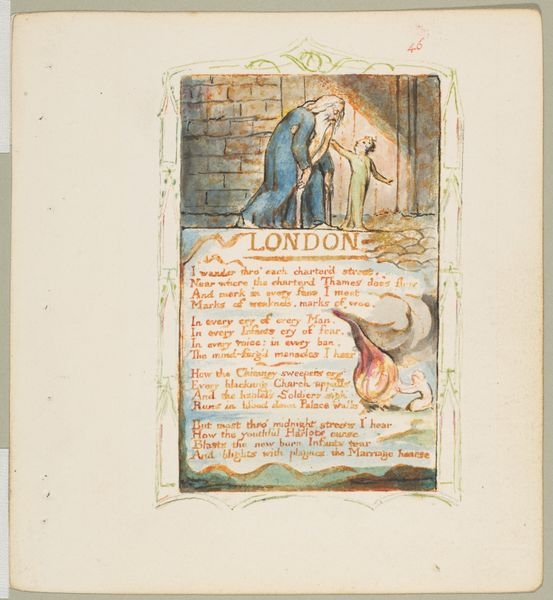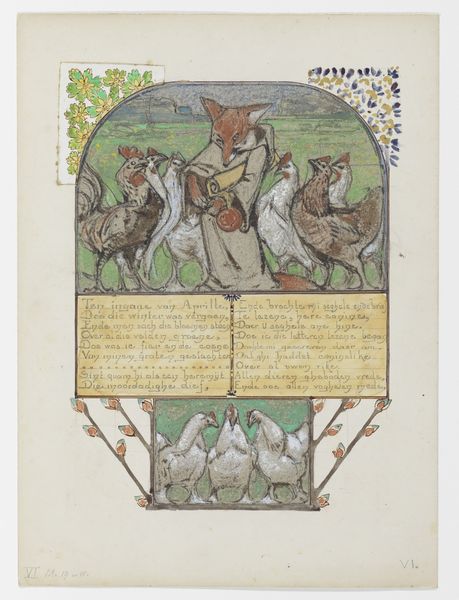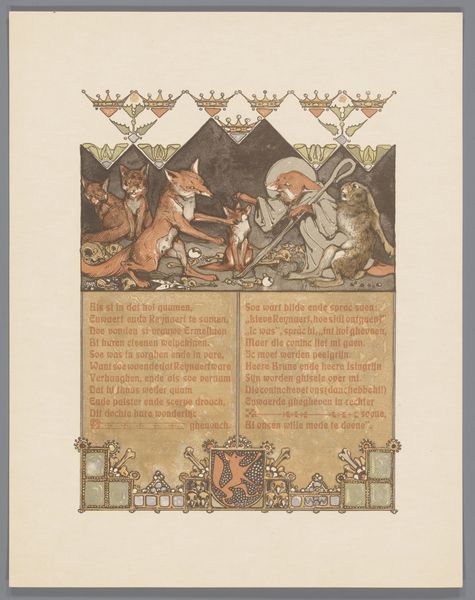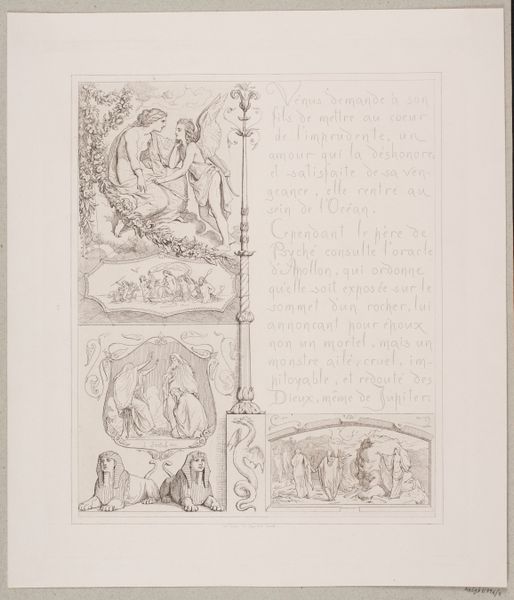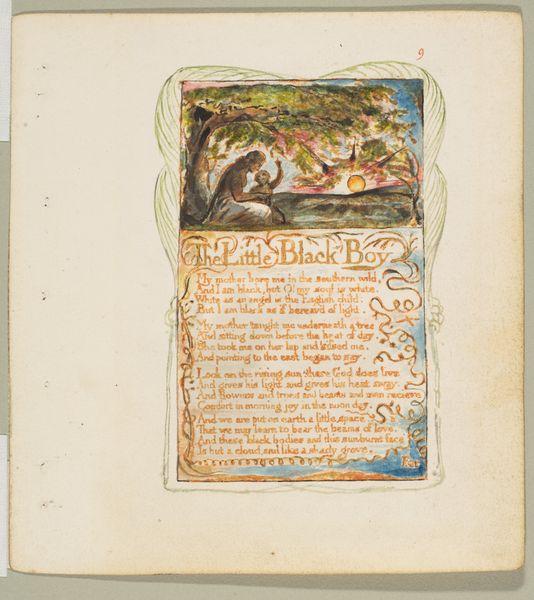
drawing, paper, ink
#
drawing
#
fairy-painting
#
aged paper
#
toned paper
#
art-nouveau
#
pale palette
#
narrative-art
#
figuration
#
paper
#
personal sketchbook
#
ink
#
ink colored
#
symbolism
#
sketchbook drawing
#
watercolour bleed
#
watercolour illustration
#
sketchbook art
#
watercolor
Dimensions: height 368 mm, width 278 mm
Copyright: Rijks Museum: Open Domain
Editor: This drawing, “Beer (Bruun) en vos (Reinaert)” from 1910, by Bernard Willem Wierink, employs ink and watercolor on paper. There's a medieval illuminated manuscript feeling to the piece. What strikes me is the depiction of the animals and their social interactions – the sly fox, the imposing bear... How do you interpret this work? Curator: I'm drawn to the material reality of this work. Look at the paper itself: aged, toned. This speaks to a specific moment in production and consumption. The choice of watercolor and ink, readily available and relatively inexpensive mediums, suggests a conscious decision regarding accessibility and the intended audience for this narrative. How might Wierink’s material choices challenge conventional distinctions between "high art" and illustration at the time? Editor: That's an interesting point. So you’re saying the materials used influenced how it was received, potentially blurring lines between fine art and popular forms? Curator: Precisely! And consider the repetitive nature of illustration for narrative works. Was this created for individual appreciation, or mass production? These printing processes significantly democratized art, making it accessible to a broader segment of society than traditional oil paintings. And how did this new kind of artwork affect craftmanship’s market? Editor: So by examining the materiality and intended consumption, we're actually revealing a larger story about art's role in society at that time. I never thought of looking at it from this angle! Curator: Indeed. The materials and the potential mode of reproduction are entry points into understanding the artwork's cultural and economic significance. Every artistic choice reflects an artist’s intention to communicate within a defined socio-economic sphere. Editor: That really reframes how I see this piece. I'll definitely look at art materials with new eyes from now on.
Comments
No comments
Be the first to comment and join the conversation on the ultimate creative platform.

